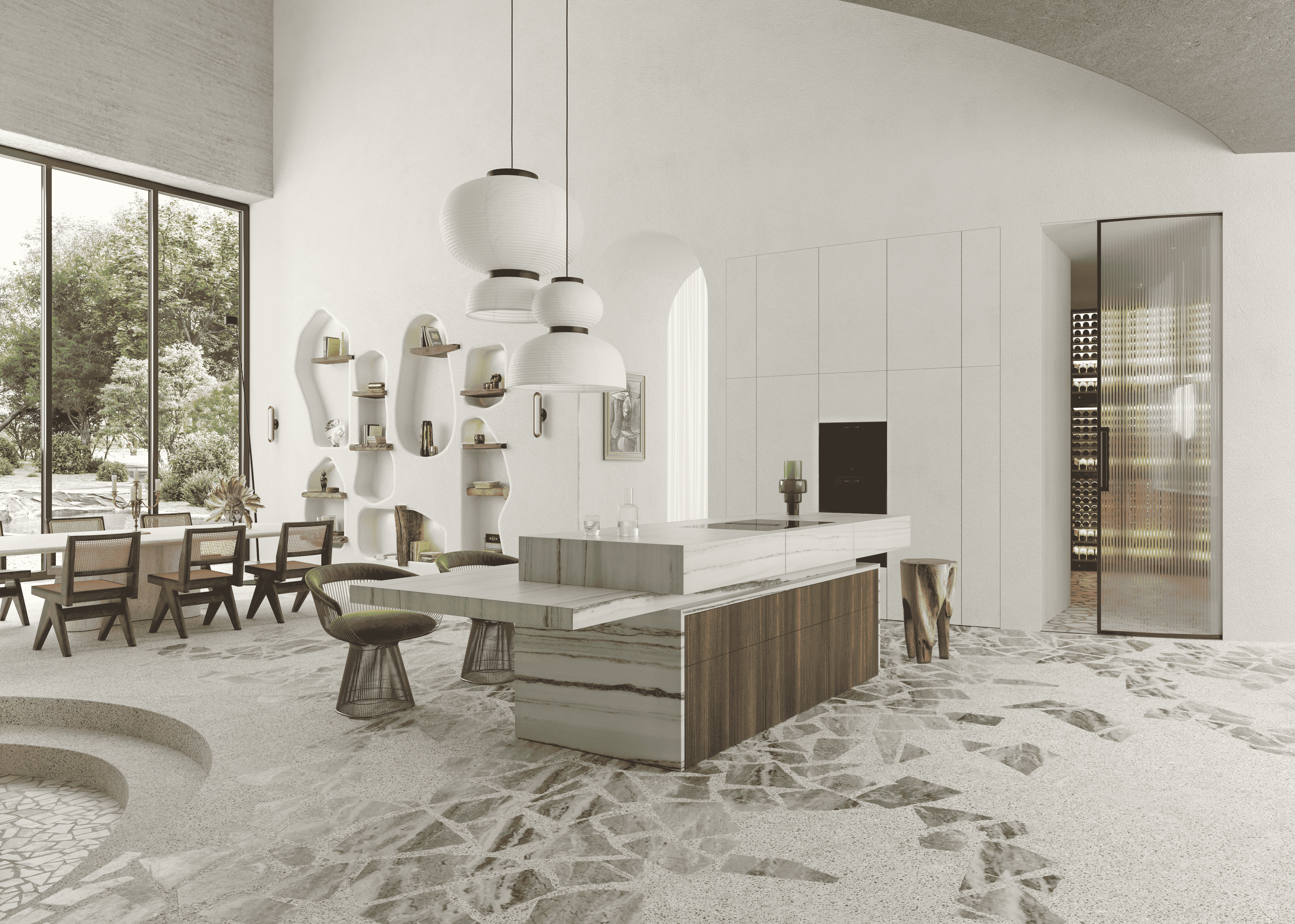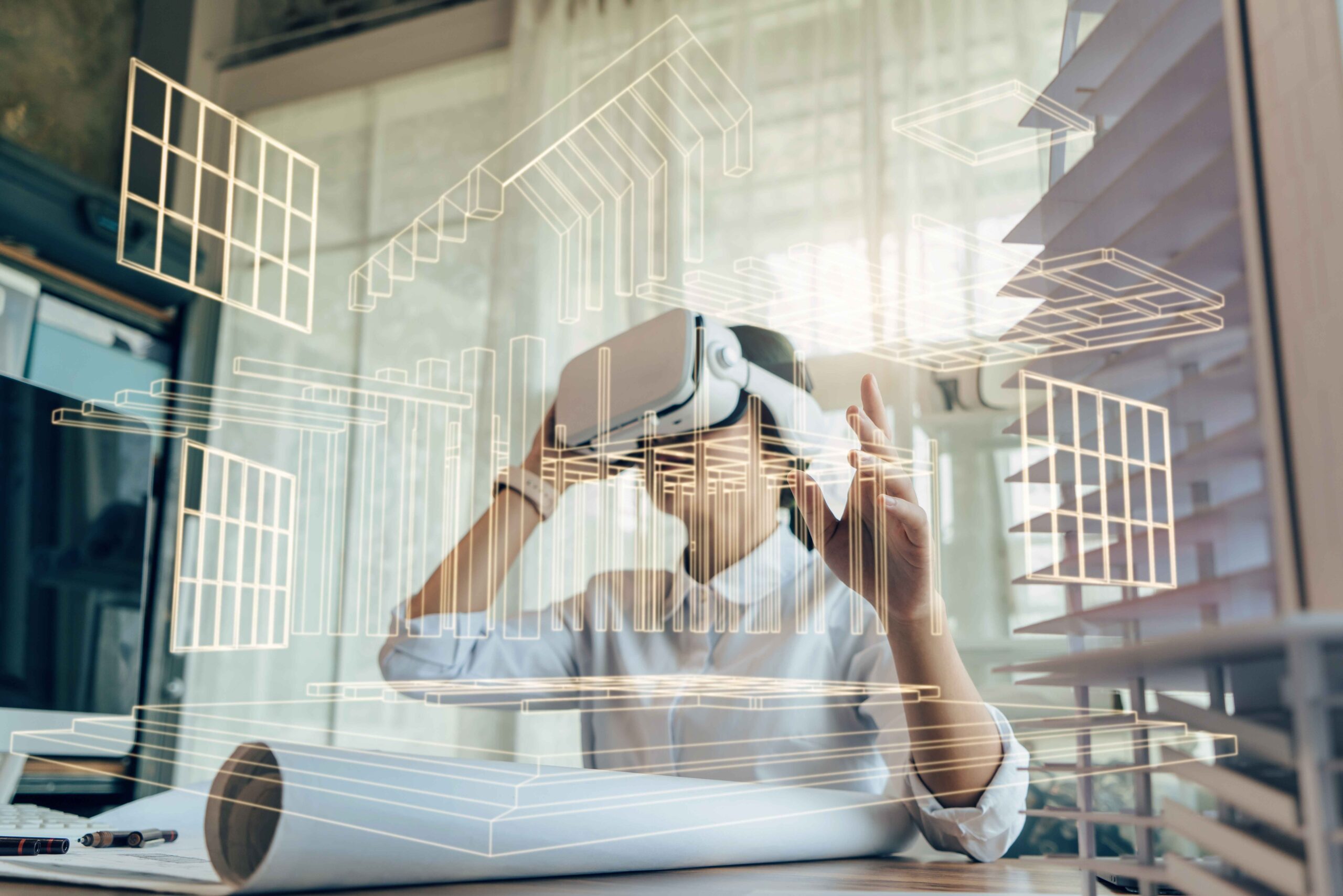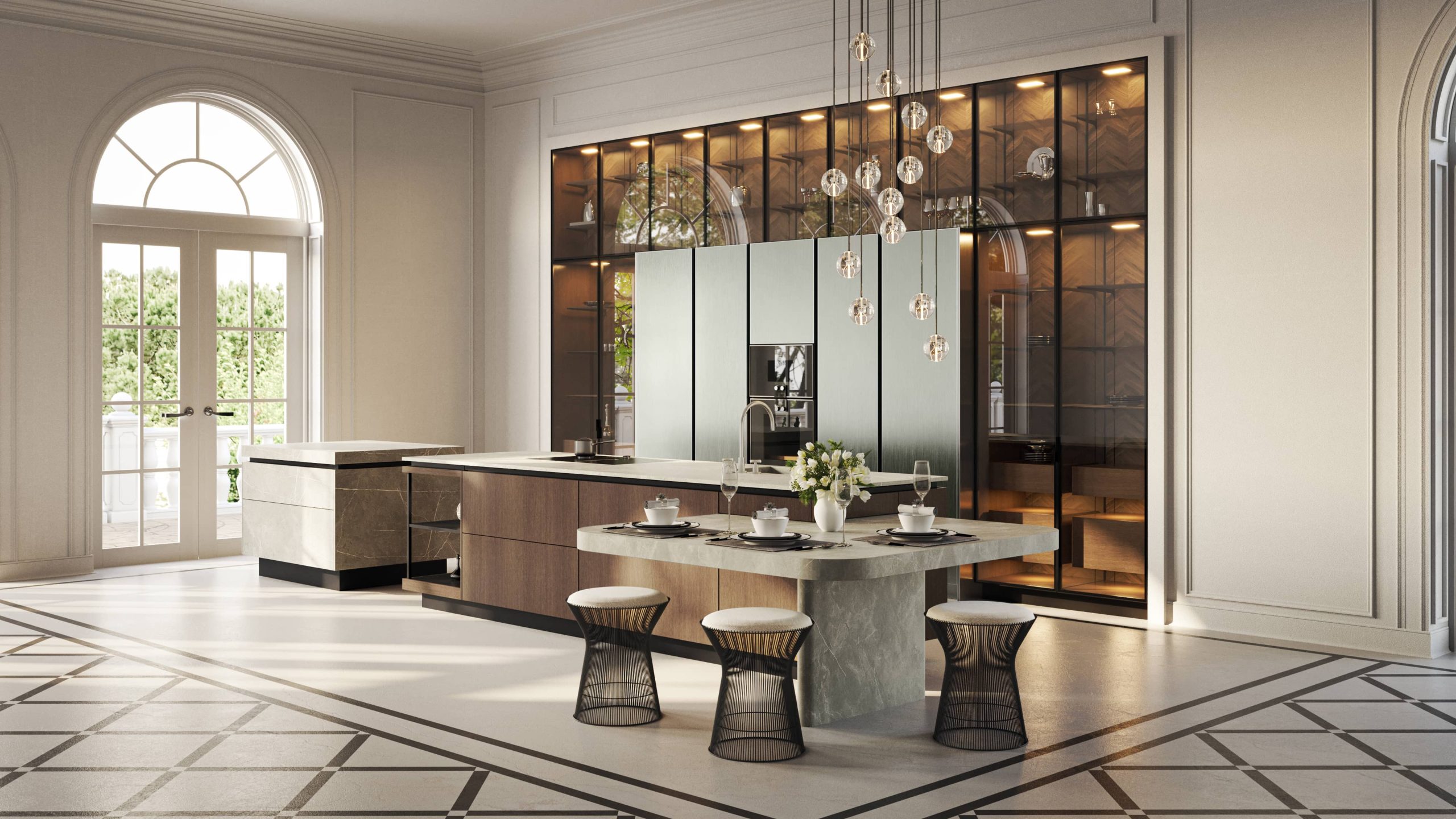
AI is the topic on everybody’s lips, entering into conversation across the board. In the creative industries, however, Artificial Intelligence (AI) is cause for particular debate, and design is no exception. However, rather than discount it or embrace it without question, at Nicholas Anthony we take the view that it is a useful tool to add to the toolbox, giving skilled individuals the time and space to do what they do best. We do not see it as a replacement for human creativity, which in terms of design, is the most luxurious thing you can have.
What AI is and what it’s not
Defining AI is essential for understanding where its merits lie. It isn’t a brain; it’s connections to the knowledge we have accumulated and entered into a digital space across the Internet. Over the last 20 to 30 years the world has become more and more connected, and we have collectively striven to increase the speed at which we continue to connect with one another, virtually, in reality, ideologically, creatively – in all ways. We see that goal in the advent of globalism.
Our Design Director, Niko Rasides, reflects on this, saying: “As a child, being from a specific part of the world, I remember realising that design was completely different where I was from, than it was in other countries – the colours, materials, the way of thinking about it. What globalisation has done is create a unique global trend, and what we see with AI is all that information filtered into one place to give us a uniform idea of what people are looking for. It’s not a creative process though; it’s just what already is, and that’s the difference between what AI does and what people do.”
Niko highlights that AI is simply data, a small portion of which already exists in our own brains. The difference between the human and artificial mind however, at least currently, is that a human mind can imagine, can visualise, and can create a path for turning something that’s visible only in the mind’s eye into a reality.
He says: “What we visualise in our minds is connected to our other senses and emotions. That process, in itself, is what creates new forms of expression. For example, humans invented writing – AI would never invent something like that because it’s not recorded anywhere. Equally, AI might be able to replicate art or the process of doing it, but that’s all. Now, of course, sometimes the second iteration of something can be best, but it is the first version that’s the pioneer.”

AI and the creative process
As things stand, AI can be an amazing assistant – it utilises information that already exists and can process it much faster than the human mind. Is that a creative process? Absolutely not. It is copy and paste solutions that imitate styles and ideas that are labelled as ‘classic’, ‘modern’, and so forth. In terms of design, it will produce images that take a little of this, and a little of that, and come up with an idea.
Will that idea be brilliant? It rather depends on your definition of brilliant. To our mind, we think not, because the result lacks the human emotion and spirit that’s required to bring it to life. The human brain always considers emotions and how we interact with our spaces, while AI, at least currently, is not at that level of connectivity.
Niko says: “In 2019 I went to the Salone del Mobile in Milan, and saw the first chair created by computers for Kartell by Starck and powered by Autodesk. It was a collaboration between artificial intelligence and human intelligence, described by Philippe Starck as ‘Natural Intelligence’. Was it nice? I thought it was strange. Do we need to train the system more? Absolutely, but it will always give us things that we already expect in different forms, shapes and colours. It’s not innovation, it’s an amalgamation of different information that already exists.”

What it means to be creative
Of course, one of the challenges around AI and the creative process, is that the interpretation of what it means to be creative is subjective. The Cambridge Dictionary is always a good place to start, saying:
“producing or using original and unusual ideas”
Meanwhile, California State University has a paper titled ‘What is creativity?‘, which includes one definition that says:
“Creativity is defined as the tendency to generate or recognize ideas, alternatives, or possibilities that may be useful in solving problems, communicating with others, and entertaining ourselves and others.”
Even the definitions are open ended, so it stands to reason that some people will perceive what AI does in generating imagery and design concepts as being a creative process itself. After all, artists take inspiration from other artists and the world around them.
What does remain uniquely human however, is the ability to voluntarily create ideas in our mind’s eye – ideas that ostensibly come from nowhere. In an article for The Conversation titled ‘Imagination makes us human‘ neuroscientist, Dr. Vyshedskiy, discussed what’s referred to as ‘mental synthesis and the imagination’, writing:
“Most nonhuman mammals have potential for imagining what doesn’t exist or hasn’t happened involuntarily during REM sleep; only humans can voluntarily conjure new objects and events in our minds using prefrontal synthesis.”
This is the thing that machines can’t do, and what makes the results special, in a way that we often can’t fully describe or quantify, is the emotional and sensory root of the ideas.
Niko says: “It is only humans that can create in a way that looks human and is inherently for humans. That’s because we have emotions and senses; it’s the emotional calculator, your gut feeling and all the intangibles that can’t be described to an algorithm. It’s the primal fight or flight survival instinct that tells us when we’re threatened or reassures us that we are safe.”
‘One size fits all’ vs. ‘one of a kind’
Of course, all that human instinct is not fast and it’s not something that results in design that can be produced at scale, because it’s personal. Acknowledging where AI has an important role in design is important for understanding where its limitations are as well. It’s obvious by now that AI will be instrumental in lots of aspects of our life. What we need to do as human beings is protect creativity, and with that, the spaces that are not cookie cutter ideas that work for everyone, but premium, personal ones that are designed for the individual.
AI is not an abomination, it’s a fantastic technology that’s here to stay and makes repetitive processes and functions more efficient, enhancing how we connect. We can see it in the technology in our houses, in our Smartphones, our cars, and more. Today there are very few houses without WiFi or a single smart device within its walls. AI is a good thing as long as it’s used for our benefit. Design can rely on it to conceptualise something, for research, to produce visuals, or to provide different options within a design concept, seeing what a room looks like with one material or another, for example. This, however, is convenience, not creativity.
Niko says: “What we aspire to create at Nicholas Anthony are homes that are personal havens where you can rest, feel protected, and switch off. We are here for the people who want to create their own space – something that portrays them and their story. What will happen as AI becomes more prevalent is that a greater premium will be placed on individuality. We are not here for the ‘one size fits all’ approach – we are here for the ‘one of a kind’ approach.”

Contact us or book a consultation at one of our studios to talk to us about creating a personalised space in your home with our award-winning team.





